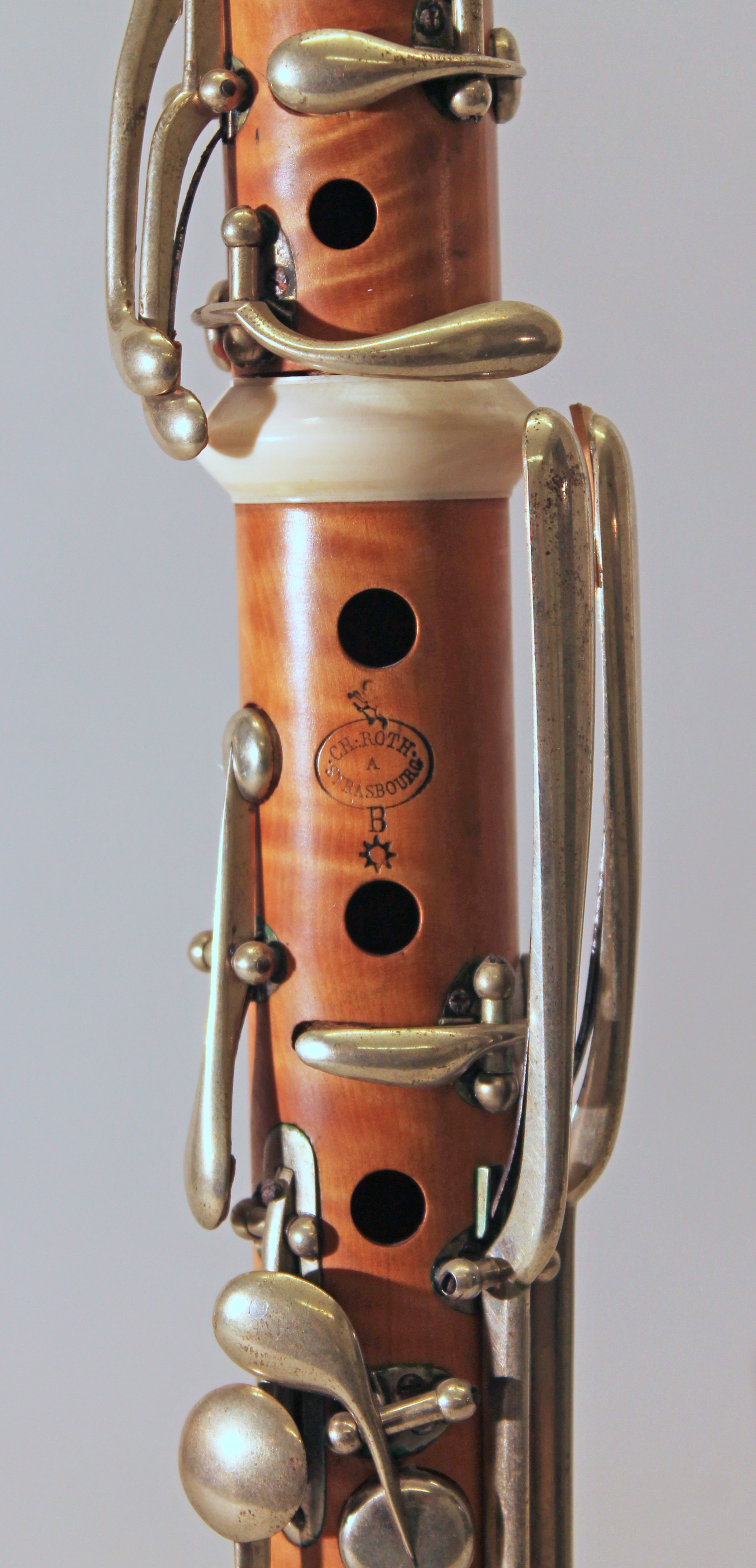Clarinet in B-flat
Charles Roth French
Not on view
The workshop of Bühner & Keller in Strasbourg was one of the most influential in the late 18th and early 19th century. Charles Roth was the successor to this workshop for high quality woodwind instruments. The workshop sign of a flying angel with a pair of straight trumpets holding one and blowing one was first used by Keller. Than it was adopted by his successors Bühner & Keller, Roth and Bürger. (Waterhouse, NLI, 336.)
Overall size: 641
Bore: c-hole 15.0; f-hole 15.3.
Conical part: 118
Technical description: Flamed boxwood with ivory ferrules and brass keywork. Five pieces: mouthpiece, barrel, upper section, lower section, bell. Original blackwood mouthpiece marked for a ligature. Long barrel. Speaker liner projects ca. 4 mm into bore. Thumb hole lined with ivory, liner projects 2 mm into bore. Wood under cross keys recessed. F3/C5 hinge-key, pivoted from above, partly sunk into body. Metal saddle as guidance for F♯3/C♯5.
L0: T; speaker.
L1: T; throat A♮; throat A♭.
L2: T.
L3: T; E♭4/B♭5.
L4: C♯4/G♯5; E3/B♮4; F♯3/C♯5.
R1: T; side F4/ C6; side trill key for throat A-B♮ and B♭-C.
R2: T.
R3: T; B♭3/F♮5; side B♮3/F♯5.
R4: F3/C5; G♯3/E♭5.
Keyhead type: shallow cups.
Keymount type: pillars on plates.
Inscribed on all five pieces with an angel with trumpets / (in oval cartouche) "CH. ROTH / A / STRASBOURG" / "B" / sunburst.
Playing accessories: a reed, a ligature, and a reed-cap.
(Heike Fricke, 2014)
Due to rights restrictions, this image cannot be enlarged, viewed at full screen, or downloaded.
This artwork is meant to be viewed from right to left. Scroll left to view more.



